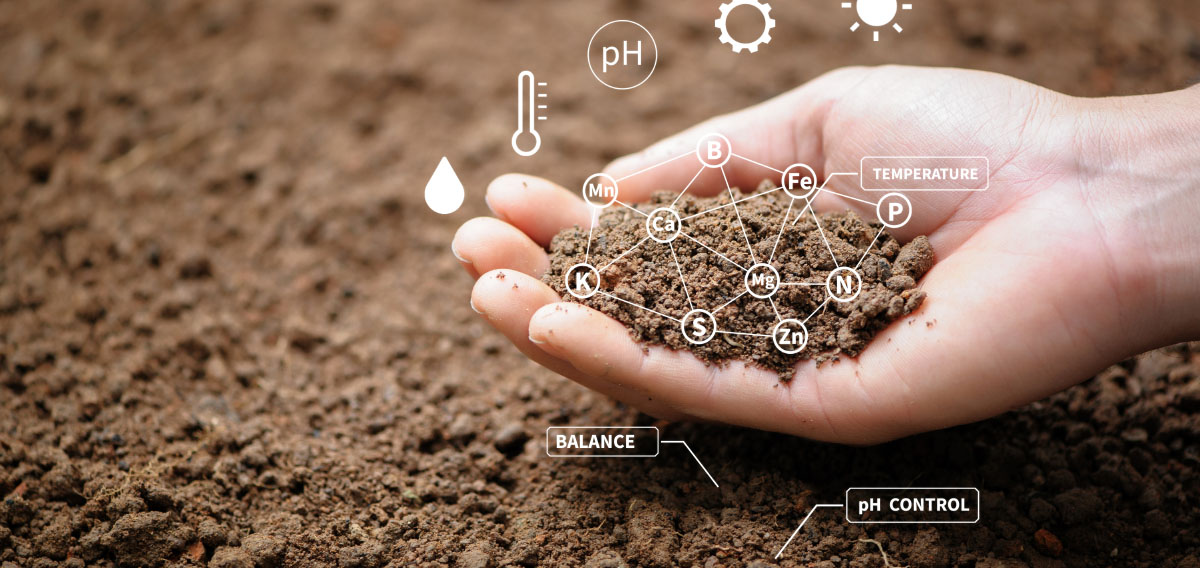Dirt. If you’re thinking about dirt it’s probably because you’re trying to clean it off something, and even the keenest gardeners don’t always give it the love that it deserves.
But soil is a critical resource that plays an important role in all kinds of processes that sustain life on our planet, from its use in agriculture to its ability to regulate greenhouse gases and the Earth’s temperature. In fact, the ecological roles played by soil are so numerous and diverse that soil is considered a foundation of many ecosystems, so it shouldn’t come as a surprise that good soil is critical to the health of your plants and is the foundation of any successful garden.
So how do you know the soil in your garden is healthy? And what steps can you take to improve it?
How to measure soil quality
It’s important to learn as much as you can about the quality of your soil before you begin trying to make improvements, otherwise it’s all guesswork and you could do more harm than good. A doctor wouldn’t begin to treat a patient without first making a diagnosis.
Soil properties that we’re interested in include nutrient density, structure or tilth and acidity/alkalinity (pH).
Nutrient density
Soil must be nutrient-dense for you to stand any chance of maintaining healthy, happy plants.
Macro and micronutrients – such as nitrogen, phosphorus and potassium – are found naturally in soil but can become depleted, particularly if your plants have been growing in the same spot for some time.
So how can we figure out whether your soil needs a helping hand?
Aside from sending your soil to a lab for analysis, one of the most effective ways to determine soil health is the earthworm test.
Ideally your soil will be around 10c and a little moist when you carry out the test. Using a shovel, remove around 1 cubic feet of soil and place it in a barrow or on a flat, hard surface. Break the soil apart carefully, examining it for earthworms. If you find 10 or more you have healthy soil, and in fact the earthworms themselves contribute to soil health by secreting a mucus that improves soil structure. Significantly less than 10 earthworms suggests that your soil needs some work.
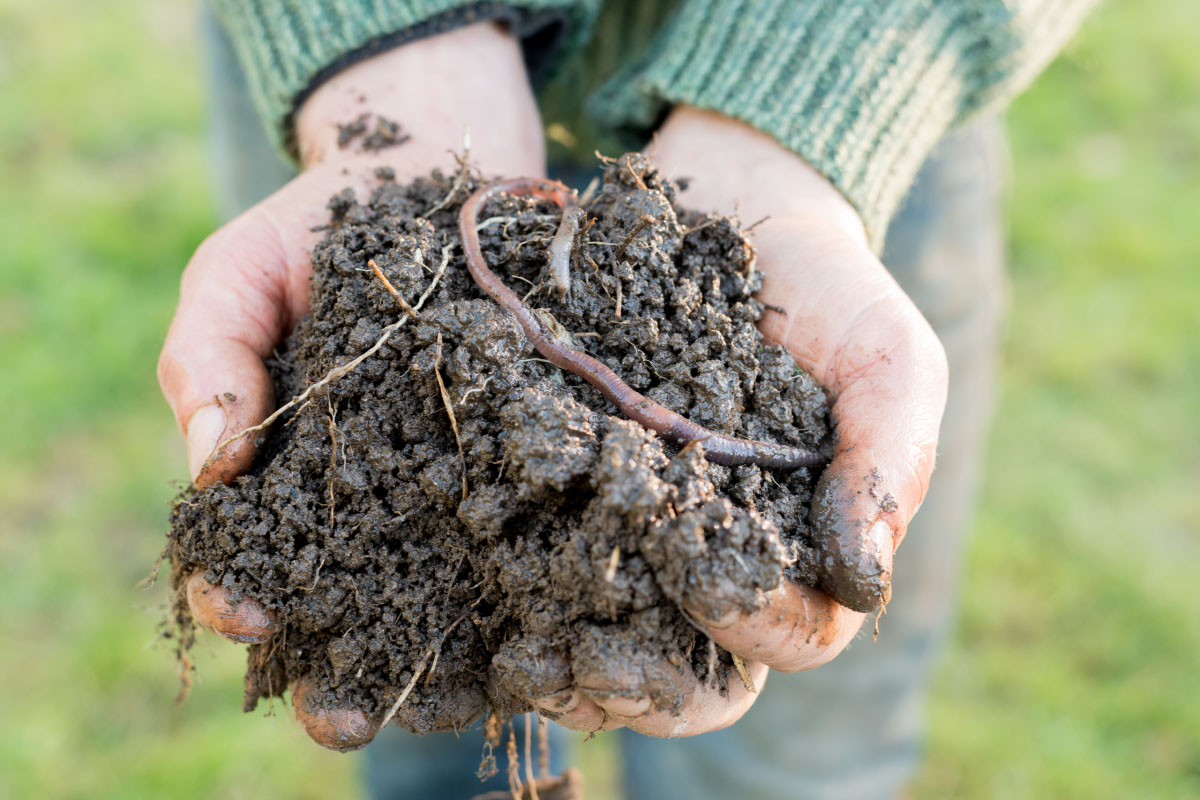
While you’re looking for earthworms keep your eye out for other critters and organisms such as fungi, as their presence also indicates that you have healthy soil.
Structure/tilthe
Tilthe may be a term you’re not familiar with, but it relates to the physical structure of soil and the stability of soil particles.
Take a handful of slightly moist top soil and break it apart. If it consists of different sized, round chunks that break apart easily, this is great for aeration and water filtration, and great for growing plants.
Soil that’s difficult to break apart would be considered heavy or hard, for example a soil that’s made up of fine clay particles that’s dry and compacted in summer but a soggy mess in winter. Compacted soil is less resistant to evaporation and is unable to provide plants with an adequate supply of water between waterings, particular during the summer months. In winter, that soggy mess means that your plants will be sat in water for extended periods, deprived of the nutrients and oxygen that are essential to keep them healthy.
Another way you can be sure you have a heavy soil is if tilling your borders and flower beds is hard work, and you end up with clods of earth stuck to boots and shovels. Poor workability is an indicator of poor soil structure and a sign that you have work to do if you want your plants to thrive.
At the other end of the spectrum are silty or sandy soils, which drain well and are well-aerated, but often lack plant nutrients as they’re quickly washed away. Sandy soils can also be very acidic.
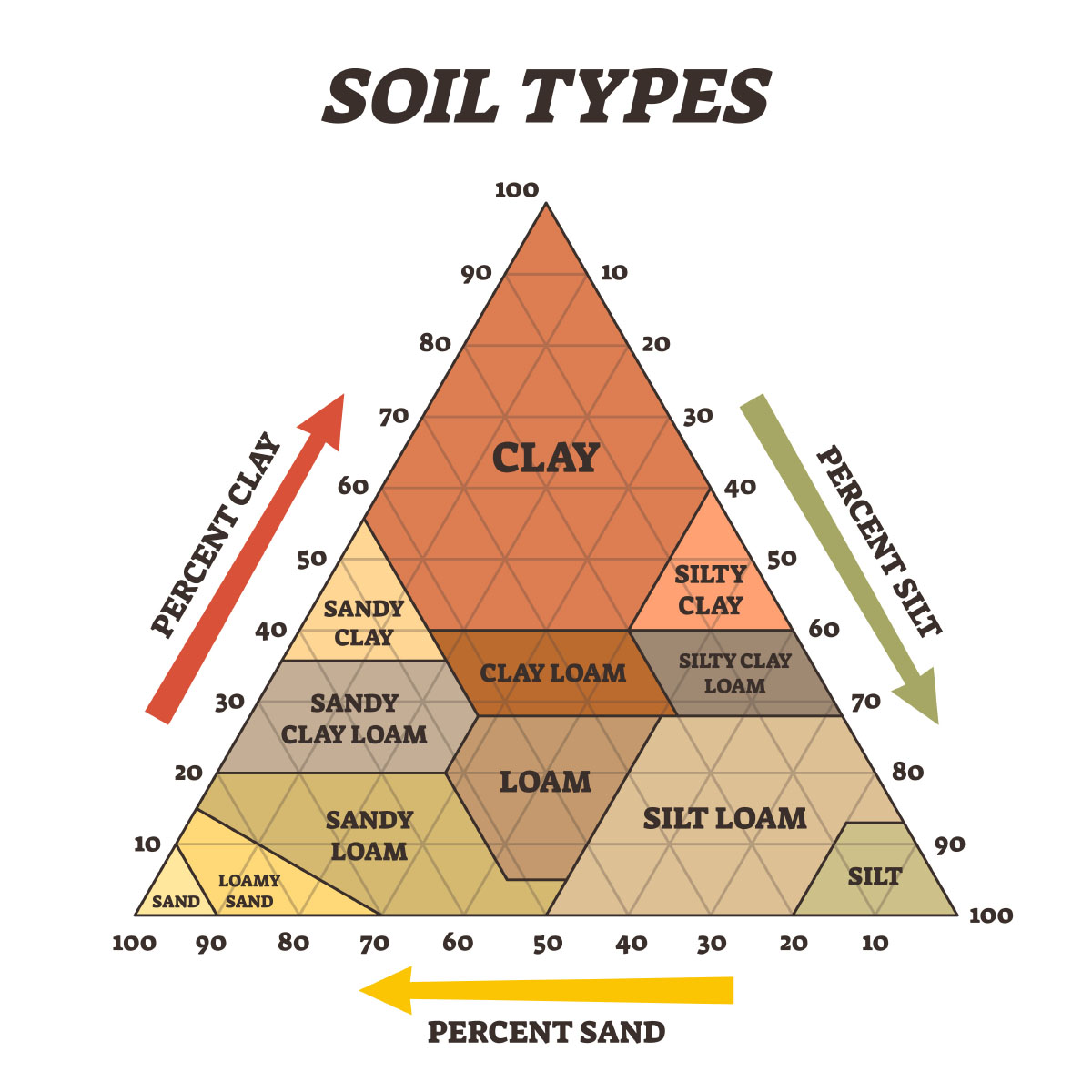
Loams that are a balanced combination of clay, silt and sand, avoiding the extremes, tend to be the ideal soil types.
Well-aerated soil allows both air and water to readily reach plant roots, ensuring they get the water they need in summer but also preventing root rot in winter.
Soil acidity/alkalinity (pH)
Different plants enjoy different soil conditions, and that includes soil acidity. For example, rhododendrons and heathers prefer an acidic soil (pH 5.1 – 6.0), whereas lily of the valley and lilacs prefer slightly alkaline conditions (pH 7.1 – 8.0).
Most plants won’t grow well at the extreme ends of the pH scale as very acidic (under pH 5.0) or alkaline soils (over pH 8.0) reduce the availability of those all-important macro and micronutrients.
If you’ve no plants that favour specialist pH conditions you should aim for pH 6.5 (neutral), as this allows the widest range of plants to grow.
You can test with a soil pH meter or testing kit, but there’s a cheaper and perhaps more fun option.
Collect 1 cup or 120g or soil from your garden and put two spoonfuls each into separate containers – jars or Tupperware will do.
Add half a cup or 60ml of white vinegar to one of the containers. If it fizzes, you’ve got an alkaline soil with a pH higher than 7.
If you don’t see any reaction, add filtered tap water to the second container until it has a muddy consistency, then add half a cup (60ml) of baking soda. Any reaction would suggest you have acidic soil with a pH under 6.
No reaction in either container? You have neutral soil that’s somewhere around pH 6.0 – 7.0.
How to improve your garden soil
Now you have a better understanding of the quality of your soil, it’s time to learn how to improve and maintain it, resolving any issues that may be holding your garden back.
1. Add organic matter
Organic matter comes in many forms – including composts, aged manure, mulch and green manures – and is the key to soil health as it provides nutrition and promotes a bio-diverse sub-culture in your soil. It feeds your plants while promoting drainage and improving aeration, all of which are essential to encourage plant growth.
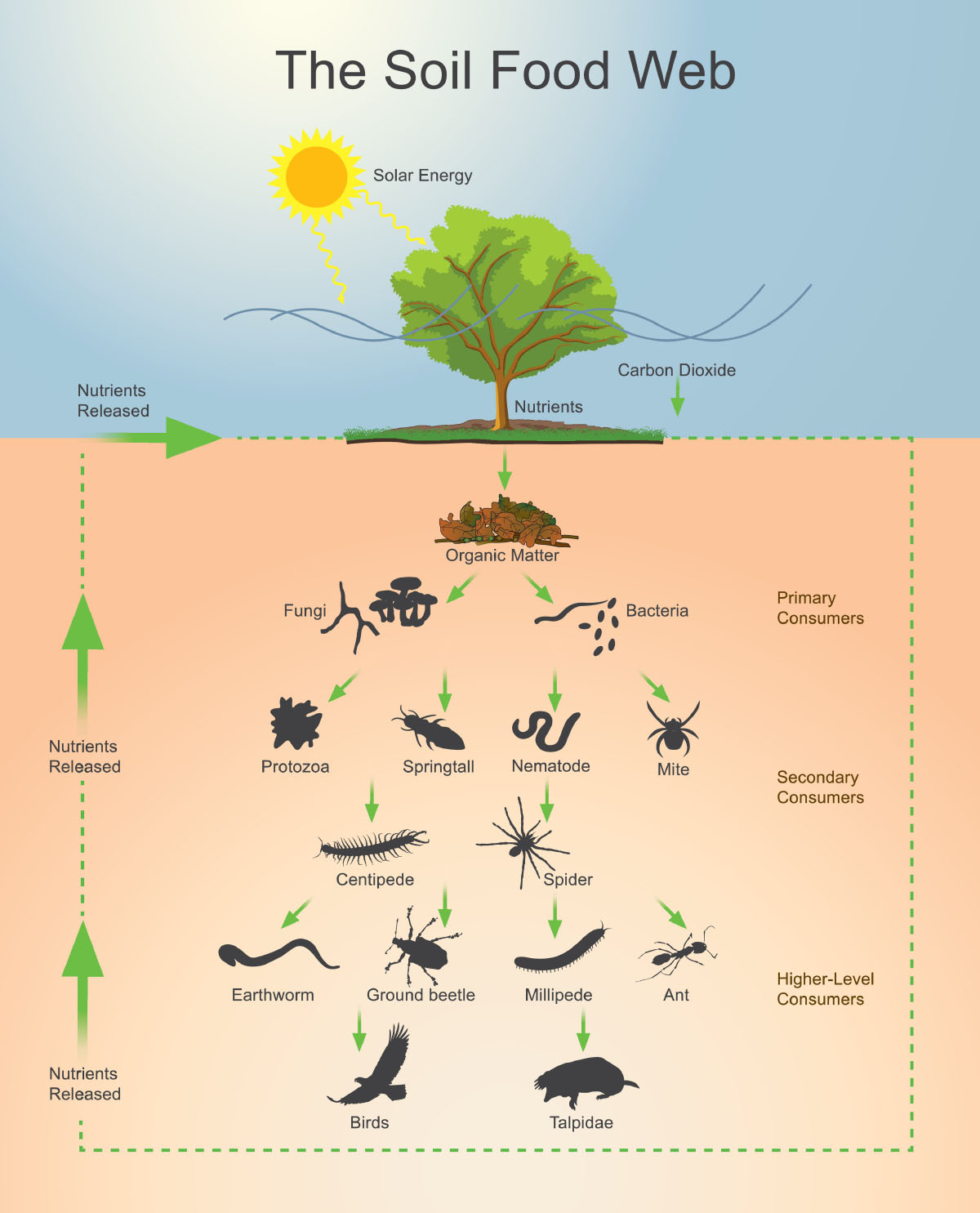
Work compost or manure into the soil by digging over the area in question while adding the new material as you go. If you’re using manure make sure it’s well rotted, as the nitrogen contained in fresh manure will scorch young plants in particular.
As microbial life and earthworms proliferate in your healthy soil, aeration and drainage will improve, nutrients will be retained and your plants will be protected from many common plant diseases, ensuring your garden looks better than ever.
2. Mulch with compost or conifer bark
Mulching involves covering the surface of your soil with organic material in order to suppress weeds and lessen the need for watering, but it also improves soil health if carried out effectively.
A good quality compost or processed conifer bark is the ideal choice but you could also use aged manure and even leaf mould. Grass clippings from the lawn can be used but make sure you store the clippings for a few weeks before using them, as fresh clippings can use more nitrogen than they contribute.
Spread the material evenly over your flower beds and borders to a depth of 2-3in, making sure not to smother your plants. Mulch can protect the roots of your plants from frost but too much can cause stems to soften or rot.
Be wary of low-quality mulch as it’s possible to inadvertently introduce pests or disease to your garden.
As your organic mulch decomposes it will feed not only your plants but also the microorganisms living in the soil, reducing the need for fertiliser while also slowing down the growth of new weeds by preventing daylight from reaching the surface of the soil.
3. Aerate your soil
Plants aren’t so different to people, in that they need water, food and daylight to survive. They also need air, but some soil types are so dense or compacted that the atmospheric nitrogen and oxygen contained in fresh air can’t reach the plant’s roots.
Sandy soil is equally problematic in that the large particles allow too much air to penetrate, speeding up decomposition so that you’re forced to feed your soil more regularly.
If you have any of these soil types, add compost or well-rotted manure to address the issue – and you’ll also see all the other benefits that come with the introduction of organic matter to your soil.
As you add the compost, the act of digging and forking the soil will loosen it and reduce compaction, as well as offering you the opportunity to do a spot of weeding as you go.
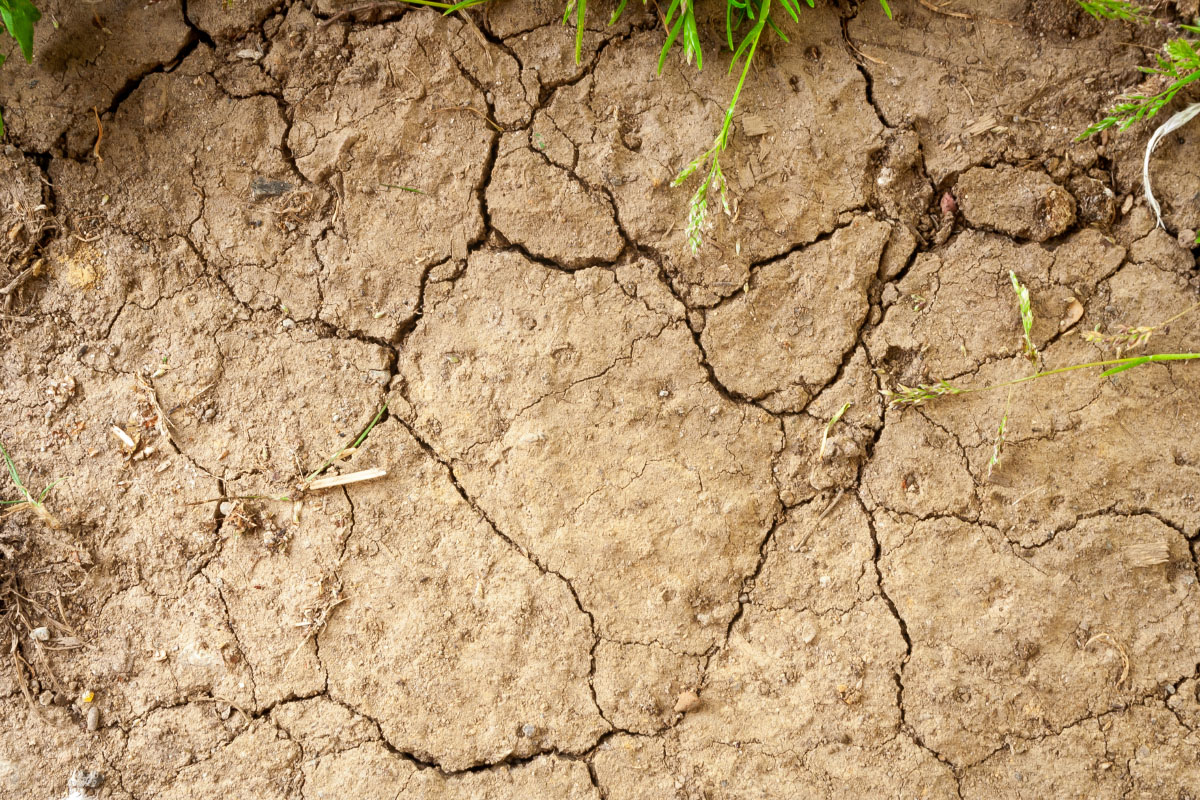
4. The right amount of water
As discussed earlier, your plants suffering from too little or too much water is another issue related to soil structure. Heavy, clay-based soils retain moisture for too long, rotting the roots of plants. Sandy soils are unable to retain moisture and increase the frequency of watering.
The solution? You guessed it. If in doubt, add organic matter.
Compost, manure and mulch all retain water that plants can access when they’re thirsty, and when added to heavy soils will form aggregates that allow water to filter through the soil rather than accumulate.
Healthy soil is around 25% water, which is attainable if your beds and borders consist of a balanced loam that allows air and water to penetrate in moderation.
5. Balance your pH
If you’ve measured the pH of your soil and discovered it isn’t suitable for the varieties you’ve got planted in your garden, it’s time to adjust your soil pH. Patience is key as this isn’t an exact science and can be a slow process, but it’s worth the effort as suboptimal soil pH can really hamper plant growth.
If you’re growing rhododendrons, camellias, heathers or blueberries and have discovered that your soil is neutral or alkaline, there are many organic materials you can add to your soil to acidify it. Sawdust or wood chips, leaf mould, peat moss, coffee grounds and fresh manure will all do the job, but expect to wait many weeks or months to see results. Agricultural sulphur can be quicker acting but it may still take several weeks to do its thing and isn’t as effective as organic material over time. Either approach takes longer during the winter months when the ground is cold, and the amount of additive or material required is determined by the type of soil you’re adding it to – heavy soil will usually require much more product than sandy soil.
To raise your soil pH to neutral or beyond – for those alkaline loving plants – adding lime is the obvious choice, but bone meal and ground eggshells can also be effective. Again, more will be required to adjust the pH of loamy or clay-heavy growing mediums.
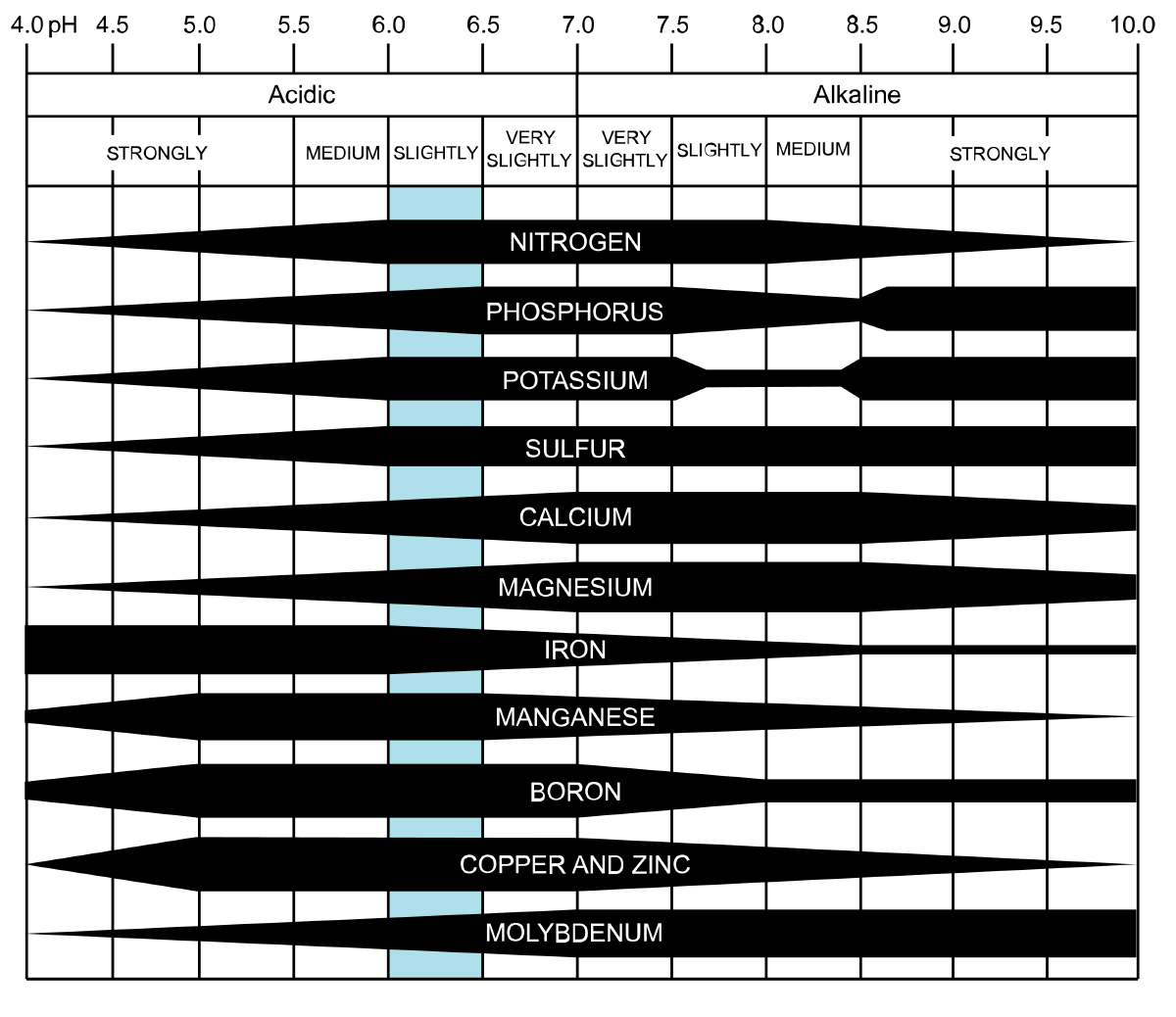
Do be careful not to take it too far, as nutrient deficiency is common if your soil is either too acidic or alkaline. If in doubt, do a test – the vinegar and baking soda method is cheap but if you’re regularly measuring your soil pH you may wish to invest in a meter.
6. Create an environment that nurtures life
It’s not just your plants that you need to focus on keeping alive. Your garden should be teaming with organic life, both above and beneath the surface. Get your soil structure and nutrient balance right and these organisms will thrive, contributing further to the quality of your soil. Not only will you benefit from critters like earthworms and centipedes digging tunnels to aid with aeration and drainage, nematodes and bacteria can keep harmful pests at bay by consuming them or releasing toxins that kill them.
If you have a problem with a particular pest you may be able to introduce an organism to counter it. For example, an army of nematodes on your side could help you rid your garden of fungus gnats, slugs or ants. Do bear in mind however, that unless you introduce them into an environment they’re suited to, they’ll sooner die than deal with your pest problem.
7. Fertilise when necessary
The organic matter that we keep referring to is the best kind of fertiliser – non-synthetic and unlikely to harm your plants even when applied liberally. Compost with added fertiliser is the obvious choice but aged manure, bone meal and blood meal are also organic and can be just as effective at helping introduce nutrients to your soil.
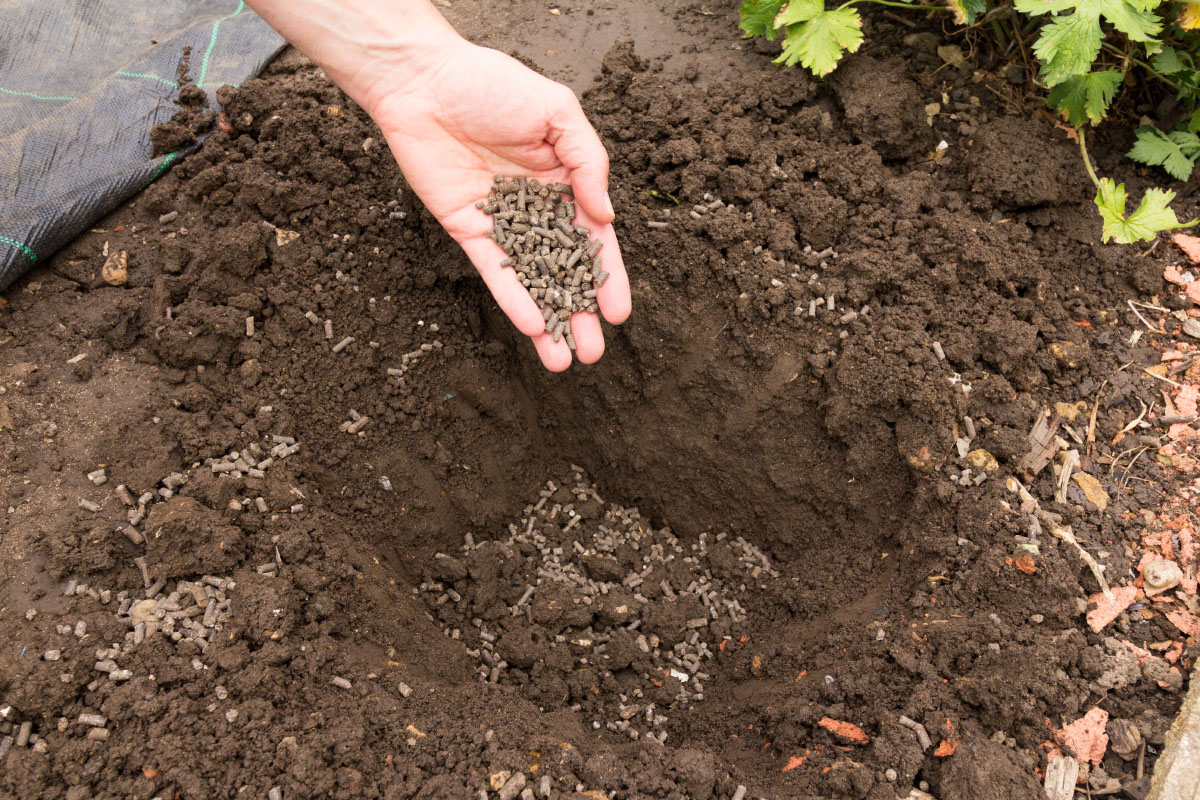
There are also other types of organic fertiliser, including liquid, water-soluble and granular, that when added to your soil can give it the extra boost it may need. Remember however, that if your soil structure isn’t optimum then using these types of fertiliser rather than compost won’t help improve it. And ultimately, if you’re having to resort to fertiliser it’s likely that some of the other properties that ensure high quality soil aren’t ideal. Nutrients should occur naturally in well-maintained soil, so it may be time to go back to the soil testing stage and try to figure out what’s gone wrong.
We won’t even touch on synthetic fertilisers as they can harm the environment, will make your garden reliant on reapplication of whatever solution you’ve used and will kill all of those beneficial microorganisms we’re trying to nurture.
Supercharge your soil
You’re now armed with a handful of methods that are sure to help you improve your tired, nutrient deficient soil and give your garden the opportunity to thrive.
Now it may be tempting to just sit back and admire your healthy plants, but there’s still work to be done! Keep testing and improving, as soil maintenance is necessary to ensure your plants always look at their best. If you pay attention to changing conditions you’ll be able to make subtle adjustments rather than more time-consuming wholesale changes. A layer of mulch here and a bag of compost there goes a long way to guaranteeing the health of your soil and of your garden more generally.
Happy soil improving!

